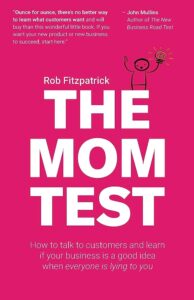Decoding the Secrets of Speed to Market
In today’s highly competitive business landscape, organisations strive to rapidly deliver their newest products to consumers in order to maintain a competitive edge. The ability to effectively prioritise speed to market can determine whether a company is perceived as an industry leader or merely a follower.
If you’re curious about the potential benefits of speed to market and how it can impact your business, it’s crucial to understand its definition, significance, and recommended strategies. This article delves into the concept of speed to market, highlights its importance, and provides insights into best practices for implementation.
What is Speed To Market?
The term “speed to market” refers to the duration it takes for a company to conceive, develop, and deliver a product to its customers. The swiftness of a company’s speed to market plays a pivotal role in determining the product’s success and its ability to outpace competitors. This concept encompasses the complete life cycle of a product, encompassing stages such as idea generation, product design, prototype creation, product development, and finally, product launch.
Are Speed To Market and Time To Market The Same Thing?

TTM, which stands for time to market, is a term that is synonymous with speed to market and represents the duration required for a product to progress from its initial conception to its official launch. These two terms are commonly used interchangeably, as they essentially describe the same concept.
Why are Businesses Adopting Speed To Market?
In today’s rapidly evolving world, individuals, organisations, and society as a whole are operating at an unprecedented pace. Each passing day brings forth new advancements and trends that redefine the boundaries of various industries.
Consequently, web-based companies face immense pressure to stand out from the competition. In this fiercely competitive landscape, the key to establishing oneself as a leader lies in relentless innovation. Those who successfully navigate this environment are the ones who consistently move faster than their counterparts.
Ultimately, the effectiveness of your innovation efforts hinges on your speed to market. Whether you’re a pioneer in your industry or an innovator in content marketing, a swift speed to market can result in market dominance, significantly enhance your brand identity, and generate substantial short-term and long-term financial gains for your organisation.
See our guide to the top 10 creative marketing strategies to make your company stand out from the competition.
Why is Speed To Market Important?

The speed to market you achieve holds significant importance as it directly influences how quickly you can bring your product to your customers, as well as whether you can outpace your competition. By delivering your product ahead of your competitors, you gain a competitive edge in the market and have the opportunity to establish yourself as an industry leader.
As an industry leader, you have the power to initiate trends with innovative ideas and become the go-to business for consumers seeking new products and ideas. Being able to reach consumers faster than your competitors enables you to swiftly gather valuable insights into customer preferences and enhances the visibility and recognition of your brand. Moreover, speed to market offers additional advantages such as reducing research and development costs, minimising wastage, improving customer satisfaction, and driving revenue growth.
Why is Speed To Market So Crucial For Go-To-Market?
In today’s dynamic and competitive landscape, characterised by rapid technological advancements and an abundance of competitors, speed to market has emerged as a crucial factor in effective project management.
When it comes to website development, a robust go-to-market strategy must consider the ever-changing nature of the industry, intense competition, and the need for agility. This necessitates marketers to adopt a proactive approach in meticulously planning and executing the launch of their products or website projects.
What Are The Issues With A Slow Speed To Market?

It is important to acknowledge the potential negative consequences of a sluggish speed to market. When companies operate at a slower pace compared to their competitors, they risk losing out on valuable opportunities to differentiate themselves. This allows competitors to seize the advantage by reaching customers first with new offers, services, and products, even if their offerings are subpar. Consequently, these competitors gain an early foothold in the market and potentially capture significant market share. Learn how to reach customers first with this guide.
A fixation on perfection can also lead to prolonged timelines. Teams may become overly focused on perfecting their product, rather than releasing a minimum viable product (MVP). While it is essential to ensure the product meets necessary functionality standards, unnecessary features that prolong the speed to market should be avoided. The ideal approach is to ship the product as soon as possible and continuously evolve it over time.
Slower organisations often find themselves following industry trends rather than disrupting them. When speed to market is compromised, consumers are provided with an opportunity to seek alternative solutions from more agile competitors. This can result in developing a reputation as an industry follower rather than a disruptor, negatively impacting credibility and market positioning.
How Can I Measure Speed To Market?
There are various ways to measure speed to market, and the choice may depend on individual preferences. One common approach is to calculate the time it takes from the initial concept creation until the product is successfully introduced to the market. Another perspective is to consider the duration from the start of product development by the team to the actual product launch.
Speed to market can be influenced by several factors, including the type and complexity of the product, as well as the specific industry in which it operates. Additionally, the size of the project and the associated level of risk can also impact the speed at which the product can be brought to market.
9 Top Tips For Improving Speed To Market
Below, you will find a compilation of nine best practices to enhance your speed to market:
1. Create a Detailed Roadmap

When embarking on your idea, it is beneficial to establish a well-defined roadmap that guides your team throughout the process. Create a comprehensive plan outlining the steps involved in designing and manufacturing your product.
This is an opportune moment for you and your team to deliberate on material selection, workflow strategies, and address any potential risks or obstacles that may arise during the product development phase. For further guidance on strategic vision, refer to the comprehensive guide on this topic.
2. Focus
While speed is undoubtedly crucial in bringing your product to market, it is equally important to stay aligned with your vision and objectives. As your development team works on building the product, it can be beneficial to prioritise and maintain focus solely on the core features and functionalities.
By avoiding the inclusion of additional features or ideas until after the product is launched or just before, you can mitigate potential delays and ensure a more streamlined development process.
3. Communicate

In product development, where multiple team members or different teams may be simultaneously working on different aspects of your product, effective communication becomes paramount. To foster a collaborative environment and ensure seamless coordination, it is essential to establish consistent and clear channels of communication.
This can be achieved through the use of various communication channels and scheduling regular meetings. By maintaining open lines of communication, team members can stay informed about the progress of other teams and remain focused on the overall objectives of the project.
4. Develop an MVP
Consider developing a minimum viable product (MVP) as a preliminary release before your final product. Launching an MVP enables you to introduce your brand and product to the market at an accelerated pace, allowing for early feedback and gauging consumer interest.
By releasing an MVP, you can conduct a test phase to gauge customer sentiment and identify any potential issues, facilitating adjustments and improvements during the development process. For more insights and examples on minimum viable products, refer to the related guide on this topic.
5. Make a Marketing Plan
Prior to the public release of your product, it is advisable to invest in the development of a comprehensive marketing strategy. This may involve making announcements on your website, leveraging social media platforms, and issuing press releases to relevant media organisations.
Additionally, offering special discounts or conducting presentations can be effective methods to capture consumers’ attention and generate anticipation for your upcoming product launch. For further guidance on real-time marketing strategies and their associated benefits, refer to the related guide on this topic.
Click here to learn more about creating a killer marketing plan.
6. Be Agile

Product development is often characterised by a dynamic nature, with frequent changes and unforeseen circumstances. To navigate these challenges successfully, it is beneficial to adopt an agile mindset and embrace the need for adjustments.
Being prepared to add resources or team members when necessary and having the flexibility to modify the direction of product development can prove invaluable. For instance, if a planned material becomes unavailable, being adaptable allows for timely alternative solutions. By expecting and embracing changes, you can effectively steer your product’s development and ensure its successful realisation.
7. Outsource
In situations where your product necessitates resources that are not readily available, outsourcing certain aspects of the work can be a viable option. Particularly for new businesses or products, leveraging external organisations or individuals can offer a quicker and more cost-effective solution for specific components of your product development.
Various tasks and processes can be considered for outsourcing, including manufacturing processes, bookkeeping, payroll processing, marketing, shipping, logistics, customer service, IT management, graphic design, website management, social media management, and advertising. For a deeper understanding of the benefits associated with outsourcing, refer to the related guide on this topic.
8. Find a Short Supply Chain
In order to reach their consumers, businesses typically rely on a supply chain that involves various vendors and entities. By streamlining the supply chain, such as adopting direct-to-consumer shipping, you can expedite the process of bringing your product to market compared to a traditional supply chain approach. It is worth exploring strategies to enhance the flexibility and efficiency of your supply chain, as this can further contribute to accelerating your speed to market.
9. Use a Project Manager
When it comes to managing your product development, it can be beneficial to contemplate the option of hiring a project manager or a dedicated project management team. These professionals possess the expertise and skills required to effectively plan and oversee projects of varying scales, ensuring they adhere to timelines and budgets.
By engaging a project manager, you can rely on their ability to ensure your product development stays on track while providing the necessary resources and support to your development team.
How Can I Optimise Development For Speed To Market?

To enhance speed to market, businesses should prioritise streamlining their supply chain to maximise agility, efficiency, and resilience. The following strategies can be implemented:
- Leveraging data for supply chain evaluation and enhancement: Data plays a pivotal role in providing end-to-end visibility and valuable insights across the supply chain, pinpointing areas for improvement. It enables better understanding of inventory levels, delivery times, and the ability to proactively address potential issues. Enhanced visibility also allows businesses to offer accurate order tracking, leading to increased customer satisfaction. Investing in data quality and analysing customer preferences and market trends is essential for meeting product demand effectively.
- Investing in automation: Supply chain automation minimises errors associated with manual processes, improving efficiency and accuracy. Automated systems enable faster task completion, freeing up employees to focus on more complex responsibilities. This boosts supply chain velocity and expedites speed to market. While automation requires initial investment, partnering with the right third-party logistics provider can facilitate access to these benefits.
- Optimizing transportation: Having an optimal mix of transport options ensures resilience and speed within the supply chain. Collaborating with logistics partners provides access to diverse transport options and flexible transit times. This is particularly valuable for high-value inventory that requires continuous movement.
- Considering integration: A supply chain supported by integrated logistics, where all stages are interconnected, leads to faster and more reliable delivery, improved flexibility, mobility, and agility. Unfortunately, only a small percentage of businesses have full transparency across their supply chains. Integrated logistics offers end-to-end visibility and enhances the ability to respond rapidly to market demands.
Implementing these strategies empowers businesses to create a streamlined and efficient supply chain, enabling faster speed to market and staying ahead of the competition.
FAQ
What is Speed To Market?
Speed to market refers to the duration it takes for a company to conceive an idea, develop it, and successfully deliver it to customers. The swiftness of a company’s speed to market plays a pivotal role in determining the success of its product and its ability to maintain a competitive edge in the market.
Speed To Market (STM) Strategy
In order to effectively develop an idea, it is crucial to establish a comprehensive action plan. This plan should encompass various aspects such as determining the materials for the product, creating a prototype, outlining the workflow, devising potential marketing strategies, and identifying the ideal target audience.
Additionally, it is important to consider and address potential risks or challenges that may arise during the product launch process. By creating a detailed and well-thought-out plan, you can prioritise key tasks, evaluate your objectives, and enhance your speed to market (STM).
Why is Speed To Market Critical to Market Demand?
The speed at which you bring your product to market holds significant importance as it directly influences the timeliness of delivering your product to customers and determines if you outpace your competition. Being able to deliver your product ahead of competitors provides a distinct market advantage and contributes to building a reputation as an industry leader.
Speed To Market vs Time To Market
Speed to Market:
- Focuses on how quickly a company can conceive, develop, and deliver a product to customers.
- Emphasizes the importance of being faster than competitors to gain a competitive advantage.
- Aims to expedite the entire product life cycle from idea generation to product launch.
- Enables a company to establish itself as an industry leader by delivering products ahead of competitors.
- Facilitates the capture of market share and enhances brand recognition and customer satisfaction.
Time to Market:
- Refers to the duration it takes for a product to be ready from its inception to its launch.
- Encompasses the entire development process, including conception, design, prototyping, development, and launch.
- Provides an overview of the total development time without necessarily focusing on the speed or competitive advantage.
- Offers insights into project planning, resource allocation, and timeline management.
- Helps in setting realistic expectations and tracking progress throughout the product development journey.
You can learn more about time to market in this article.
Overview
Speed to market is a critical factor in today’s competitive business landscape. The ability to bring products and services quickly to market can make all the difference in achieving success. By embracing efficient processes, agile methodologies, and staying ahead of customer demands, businesses can gain a significant competitive advantage.
Remember, speed to market is not just about being fast, but also about delivering value and meeting customer expectations. So, prioritize speed without compromising quality, and embrace a mindset of continuous improvement to stay ahead of the game. By doing so, you can position your business for growth, profitability, and long-term success in the ever-evolving marketplace.
If you’re interested in rapidly developing a prototype for your product, check out our guide to creating an MVP. Alternatively, see our guide to the lean startup methodology to get your new business off on the right foot.







